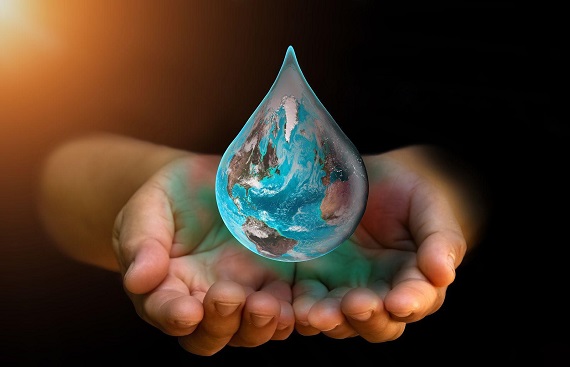Are We Ready for the Next Wave of Water Solutions?

In current world, clean water is becoming harder to find because of climate change, pollution, and more people requiring it. But there's hope! New ideas and technologies are being developing to solve these problems. The escalating risk of climate change has increased water scarcity, posturing a major challenge as verified by the World Health Organization's report representing that a quarter of the world's population is presently under water stress, with projections advising that nearly half will face similar conditions by 2030. This pressing demand emphasizes the imperative for advanced solutions and accelerated deployment of present technologies to boost the flexibility and water security of communities worldwide. Addressing this critical issue needs concentrated efforts to implement strong infrastructure and sustainable practices to moderate the impacts of water scarcity and safeguard the well-being of current and future generations.
Digital Transformation in Water Utilities
![]()
Digital technologies are changing the water industry, impacting every part from drinking water facility to infrastructure management. Both public and private water utilities are gradually more embracing digitalization to tackle challenges such as aging infrastructure and resource allocation optimization. Escalating costs associated with clean water production further highlights the need rather than the choice of adopting digital solutions. The adoption of cutting-edge technologies like AI, IoT sensors, data analytics, and smart water solutions is on the growth among water utilities, empowering them to improve operative efficiency and maximize water production through sophisticated optimization techniques.
Nanotechnology: Nanotechnology is changing the game in water treatment by using super tiny particles. These nanomaterials, created at the tiniest scale, are revolutionizing how we purify water. Nano-filters act like tiny sieves, trapping pollutants, while nanoparticles act as strong disinfectants, making water safe to drink. These breakthroughs bring hope for clean drinking water, especially in tough places. With nanotechnology, we're near to solving water scarcity and increasing public health by confirming everyone has access to safe water.
Smart Sensors and Data Analytics: In today’s digital age, having exact information is dynamic for current water management. Smart sensors, small devices installed in water systems, provide real-time updates on water quality, usage, and distribution. When paired with advanced analytics, these sensors enable us to detect leaks quickly, optimize water usage, and respond speedily to emergencies. By changing water systems into smart networks, these technologies improve efficiency and awareness for environmental changes.
Desalination: As freshwater sources face rising pressure, desalination has become a energetic technology to meet increasing water demands. Inventions in desalination like reverse osmosis and membrane distillation; have made the method more effective and affordable. Also, sustainable solutions such as solar-powered desalination offer hope for coastal regions struggling with water scarcity.
Community-Centric Solutions: Marginalized communities bear the impact of water scarcity, emphasizing the importance of inclusive solutions. Technologies like decentralized water treatment systems and mobile purification units empower communities to manage their water resources. By valuing local knowledge and involvement, these approaches ensure fair access to clean water and bolster resilience in vulnerable areas.
AI in Smart Water Management
![]()
In India, where cities are growing fast, weather patterns are shifting, and people want more sustainable ways to use water, Artificial Intelligence (AI) is becoming really important. AI can analyze data quickly and predict what might happen, helping water companies make smart choices. This is great because it means city water systems can become stronger and better for the environment. India faces lots of challenges like too many people in one place, old pipes, and dirty water. AI can help fix these problems by spotting things like nitrate pollution, making sure water is delivered when it's needed, and keeping the pressure right. It's like a smart solution that can make sure everyone gets clean water, and it's about time we use it.
AI works like magic in transforming real-time data into valuable insights for water management. By delving into vast datasets from satellites and sensors, AI enables authorities to make informed decisions, ensuring efficient resource allocation and distribution. It acts as a vigilant guardian, predicting and preventing leaks in water infrastructure through continuous monitoring. Additionally, AI orchestrates the operation of pumps and valves in real-time, optimizing water flow and reducing energy consumption. Its role as a detective uncovers vulnerabilities in the water supply system, offering a lifeline for water security, especially in underprivileged communities, by allowing authorities to take proactive measures to ensure access to clean water- a fundamental necessity for life.
The integration of AI into India’s water management marks a significant leap forward, aligning seamlessly with initiatives such as the Jal Jeevan Mission and Sustainable Development Goal 6 (SDG 6). With AI guiding the way, India advances towards greater efficiency, sustainability, and equitable water distribution. These efforts pave the path for a future where water flows reliably and accessibly to every citizen. However, collaboration remains essential for realizing this vision. By partnering with international entities, private sectors, and research institutions, India can accelerate its journey towards water security. This collaborative approach not only ensures clean water access for all but also contributes to global efforts in achieving water-related sustainability goals, underscoring India’s dedication to a brighter and more water-secure future.
Final Note
In a world facing water scarcity, a new technology shows how important it is to use sustainable ideas to make sure sufficient water availability for all in the future. These new ideas remind us that we need to find ways to save water, use it better, and make sure everyone can get it fairly, so that everyone has enough water.
